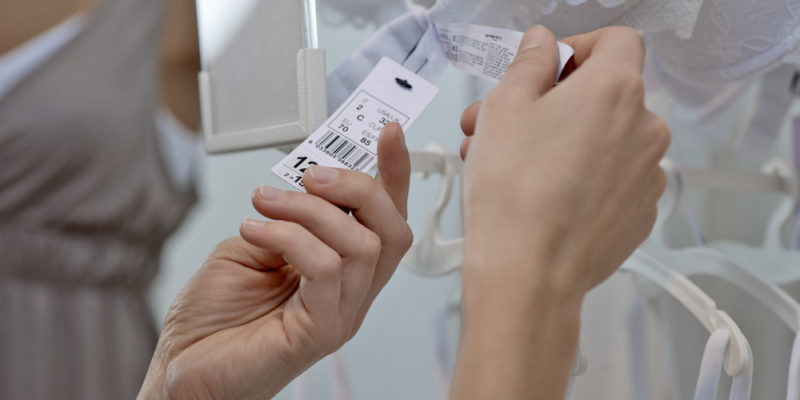We explain what the import substitution industrialization model was and how it came about. Also, what are its characteristics, advantages and disadvantages.
What is the Import Substitution Industrialization Model?
The import substitution model, also known as import substitution industrialization (ISI), was an economic model adopted by numerous countries in Latin America and other territories of the so-called Third World during the first third of the 20th century , especially during the period after of the First World War and the postwar period of the Second.
This was intended to be carried out with a strong and protectionist State, with important interventions in the trade balance of these countries, through import tariffs, high exchange rates and subsidies and support for local producers.
Characteristics of the import substitution industrialization model :
Historic context

The European economic depression that characterized the first third of the 20th century had a significant impact on the economy of peripheral countries.
With their economy in crisis, European countries suspended the purchase of imported goods , or imposed high tariffs, seeking to protect their own consumption.
This caused a drop in the currencies of the Third World countries , which in turn were unable to import what they usually consumed, since the drop in industrial activity meant less consumption of raw materials . In this context, the import substitution industrialization model emerges as a response and an attempt to industrialize their developing nations on their own account .
-
Imports and exports
Dependent economies, which import a large part of their consumer goods, on the other hand, are particularly susceptible to foreign influences and respond less well to world consumption crises.
Target
The primary objectives of the import substitution industrialization model point to the development and growth of the local industrial structure , which would begin to produce those traditionally imported goods.
For this, the State would have to offer economic benefits and incentives , as well as a protective tariff system for national products.
-
Strategies and Measures
 The main measures and strategies of the import substitution industrialization model were:
The main measures and strategies of the import substitution industrialization model were:
- Large subsidies to local industry.
- Taxes or barriers to imports.
- Avoid direct foreign investment .
- Promote the substitution of foreign products for local ones and promote exports.
- Overvalue the local currency to lower the costs of buying supplies and machinery from abroad.
- Bureaucratically facilitate access to incentives and credits for growth.
Advantages
The positive consequences of the import substitution industrialization model tended to the following:
- Short-term job growth.
- Greater welfare state and social guarantees for the worker.
- Decreased dependence on international markets .
- Flowering of small and medium industries.
- Lower transport costs (local only) which resulted in a decrease in the final costs of the product.
- Increase in consumption.
-
Disadvantages
 At the same time, the import substitution industrialization model brought with it the following drawbacks:
At the same time, the import substitution industrialization model brought with it the following drawbacks:
- General increase in prices, due to rising consumption.
- Emergence of state monopolies and oligopolies .
- Disappearance of market self-regulation mechanisms (due to state intervention).
- Tendency to stagnation and obsolescence of local industries in the medium and long term, due to lack of competition and therefore technological updating.
Phases of import substitution industrialization
The ISI process comprised two recognizable stages:
- First stage. Blocking and discouraging the importation of manufactured consumer products, through tariff and barrier schemes, along with economic incentives and other protection measures for the nascent manufacturing industry .
- Second stage. Substitution of intermediate and durable consumer goods, investing for this the capital saved during the first stage (a stock of foreign exchange in the nation).
-
Impact in Latin America
The industrial capacity of the Latin American region diversified enormously thanks to these processes, which were usually accompanied by significant technological investment, but in general terms, ISI occurred very unevenly on the continent.
This is why even today there are significant economic and industrial differences between many of the countries that aspire to economic and commercial integration, with entities such as Mercosur or the Andean Community of Nations.
The Argentine Model
The Argentine model defended above all the national agriculture , at the same time that the private manufacturing industry was protected and an attempt was made to stimulate exports with industrial value. This meant a certain degree of maturity in the constitution of Argentine society , with an increase in urbanization and formal employment, extensive schooling and development of the service sector.
All this had a positive impact on wages and social security , leading to greater general well-being, but it also gave rise to the reaffirmation of local oligopolies that the State itself would later be forced to combat.
-
The Mexican Model
 The Mexican case is another distinguished one on the continent, since the end of the Mexican Revolution in 1920 allowed the improvement of peasant and indigenous groups , whose participation in popular revolts made them key recipients of State attention.
The Mexican case is another distinguished one on the continent, since the end of the Mexican Revolution in 1920 allowed the improvement of peasant and indigenous groups , whose participation in popular revolts made them key recipients of State attention.Thus, oil and mining industries were nationalized , in addition to the railroads, which were in foreign hands, and when President Lázaro Cárdenas assumed the presidency, Mexico had survived the Great Depression.
Then the ISI began, which led to growth "inwards" , by increasing the road network, promoting the agricultural sector and reducing foreign control over the local economy. This was achieved by giving the State the leading role in economic order and change in the nation.
By the 1940s , the Mexican manufacturing sector was one of the most dynamic in the nation , hand in hand with public investment with subsidies, tariff exemptions, and growth in exports that produced new foreign exchange reserves.
The above content published at Collaborative Research Group is for informational and educational purposes only and has been developed by referring to reliable sources and recommendations from experts. We do not have any contact with official entities nor do we intend to replace the information that they emit.
Cultural journalist with great interest in education and technological innovation in the classroom. The future passes through technology and it is already here. .
Leave a reply
Your email address will not be published. Required fields are marked *Recent post

Sport: What Is It, Types, Risks, Features, Characteristics and Examples

Dogs: Emergence, Features, Characteristics, Feeding and Breeds

Story: Definition, Elements, Structure, Features and Characteristics

